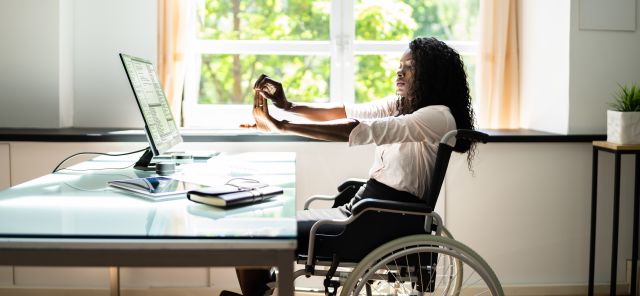Updated on July 1, 2022.
Blood clots can develop in many different parts of the body, and not all clots are medical emergencies. But when a clot form and travels from one part of the body to a vital organ (such as the brain or lungs) or when it develops within a vital organ, it can necessitate a trip to the ER.
A deep vein thrombosis (DVT) is a blood clot that forms in a vein deep within your body, usually in the lower legs or thighs. Sometimes, a DVT can break loose and travel to another part of the body. If it travels to the lungs, it can block an artery and cause a pulmonary embolism (PE), which is a medical emergency that can cause shortness of breath, symptoms similar to a heart attack and sometimes coughing up blood.
While the exact number is unknown, the Centers for Disease Control and Prevention (CDC) estimates that about 900,000 people each year are diagnosed with a DVT or PE.
Sitting and the risks of DVT and PE
If you spend a lot of time sitting you could be at increased risk for dangerous clots. In fact, a term has been coined to describe the link between a very common phenomenon—sitting at a computer—and blood clots: “e-thrombosis” (thrombosis is the medical term for blood clot).
According to a review of studies published in the journal Annals of Translational Medicine in 2018, sitting at a computer for more than eight hours per day may be associated with 1.8 times higher risk of blood clots. Increasing that time sitting to more than 10 hours per day may be associated with 2.8 times higher risk of blood clots.
The good news is that there are things you can do in your daily life to help prevent dangerous blood clots.
Let's get physical
If you have a desk job or spend a lot of time sitting at a computer, remember to take a break and move every 30 minutes. When you’re sitting, you can improve blood flow to your lower legs by flexing and stretching your feet or tightening and releasing your leg muscles. If you’re in a wheelchair or you’re not able to move your legs, stretch your hamstrings or leg muscles and consider asking someone to help you move your legs. If you have to sit for longer than four hours, such as during an airplane flight, try to move around or stretch the muscles in your legs every 1 to 2 hours.
Making a habit of regular exercise can also help by improving your circulation and strengthening your heart. To get started on staying active, try these tips:
- Be choosy. Go with your strengths and choose physical activity you enjoy.
- Start early. If you sometimes feel too tired to move, exercising earlier in the day, when your mind and body are still fresh, can help you get past that initial hurdle of getting started
- Walking counts. It doesn’t require fancy gear, and can boost your energy and mood, all while strengthening your heart and body.
- Move while you sit. You can be active while you’re in a chair.
Getting more exercise not only benefits your overall health, it might also reduce your risk for a dangerous blood clot.






